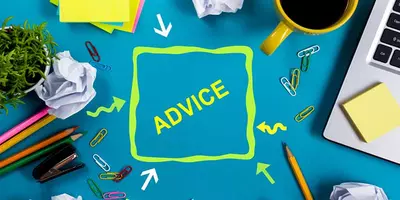
Apr 15, 2016 ● Kate Lopaze
5 Effective Cover Letter Techniques That'll Get You the Job
Like so much conventional wisdom on how to find a job, apply for it, and get an offer, the cover letter is getting a fresh layer of scrutiny these days. Sure, we write them because that’s just how it’s done…but how helpful are they these days, really? And are there better ways to make them more than just the skimmed-over wrapper on the real meat of your resume?
The answers to those questions, respectively, are “not very” and “you betcha.” Cover letters are holdovers from the time when we actually wrote out an introduction to ourselves, typed or printed it out onto expensive (but tasteful) paper, and popped it into the mail, hoping it would land on the right desk. Eventually, it became the email holding the attached PDF or doc containing the resume itself.
Now, the cover letter is either sucked into an online job application engine and parsed for keywords, or likely browsed quickly while someone clicks through to the attachment. These changes in “how they read” mean there also need to be changes in “how we write.”
Here are some cover letter techniques and strategies for disrupting the traditional cover letter, and making yours a relevant piece of the application package again—even in a short-attention-span world.
1. Consider your audience.
Are you writing this for a robot (automated application system) or a human (actual email address)? If it’s the former, shoot for lots of keywords related to the job description. If it’s the latter, try to engage the person on the other end.2. Open with a memorable line.
If you’re a recruiter or hiring manager, your attention glazes over after today’s 50th “I have an extensive background in software development for cats, and I know I’ll be a good fit for your company.” Instead, try for a bit of trivia. (“Did you know that the first cat video game was originally developed as a dog video game?”) Or make a gentle joke (“My cat would never forgive me if I didn’t bring my background and skills to work for his favorite tech company.”) This is a chance to insert a little of your personality, given that your resume is a more brass-tacks assessment of your history and accomplishments. But if you go this route, always, always, always make sure that the tone is light and mild. Never make an off-color joke or reference, and don’t take the reader’s sense of humor for granted. When it doubt, take it out.3. Tell a story.
Again, this is your chance to inject some of yourself into this rather clinical process. You may plan on saving up all the anecdotes for your interview, but there’s no guarantee that you’ll even get to that stage. Here’s your chance to offer a bit of personal trivia or insight that makes you well-suited to the job. If your blue-ribbon-winning science project in high school started you on your path to this career and company, say so. Keep it brief, though—just one or two sentences. You want the reader to get a quick sense of who you are, on top of the resume data points.4. Assume the reader only has a minute or two to review.
Keep it brief—just a few paragraphs with the high-level points: an introduction, your main qualifications for the job, and a closing/call to action. Make sure you zero in on what you bring to the job up front, and what you could provide on a long-term basis.5. Format it for a small screen.
Ideally, the reader would be savoring your cover letter at his or her desk, a cup of tea in hand. In reality, he or she is likely reading on the way to somewhere else, or multitasking on a phone or tablet over lunch. Lay out your cover letter with this in mind:- short paragraphs, with bullet points whenever possible
- plenty of white space for ease of reading
- no fancy fonts or bells and whistles

